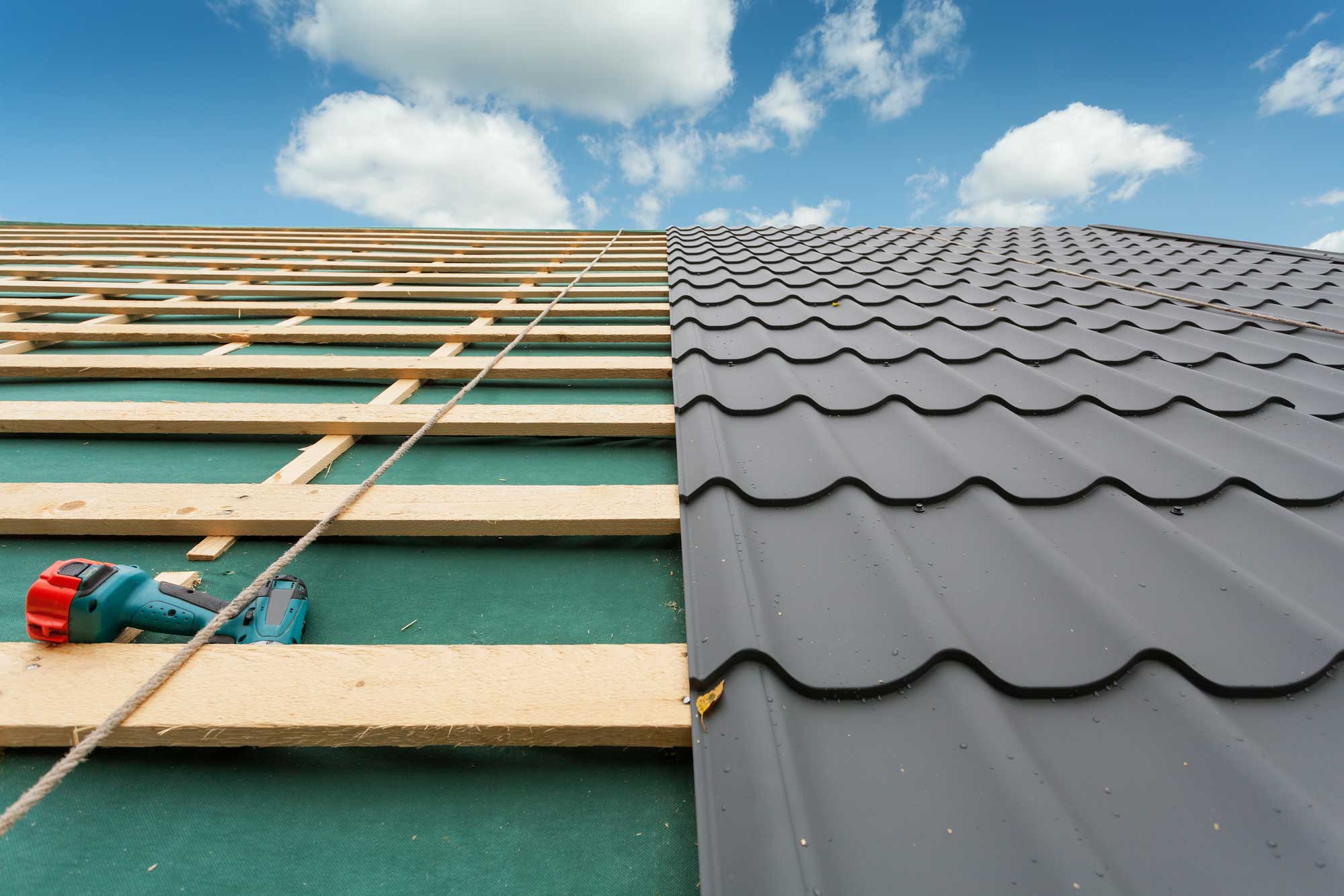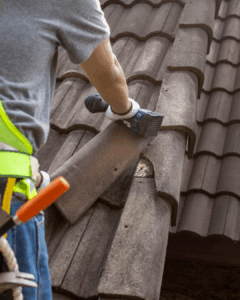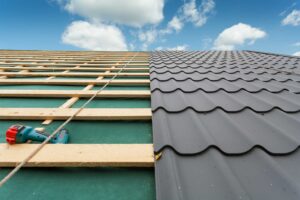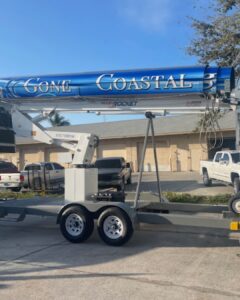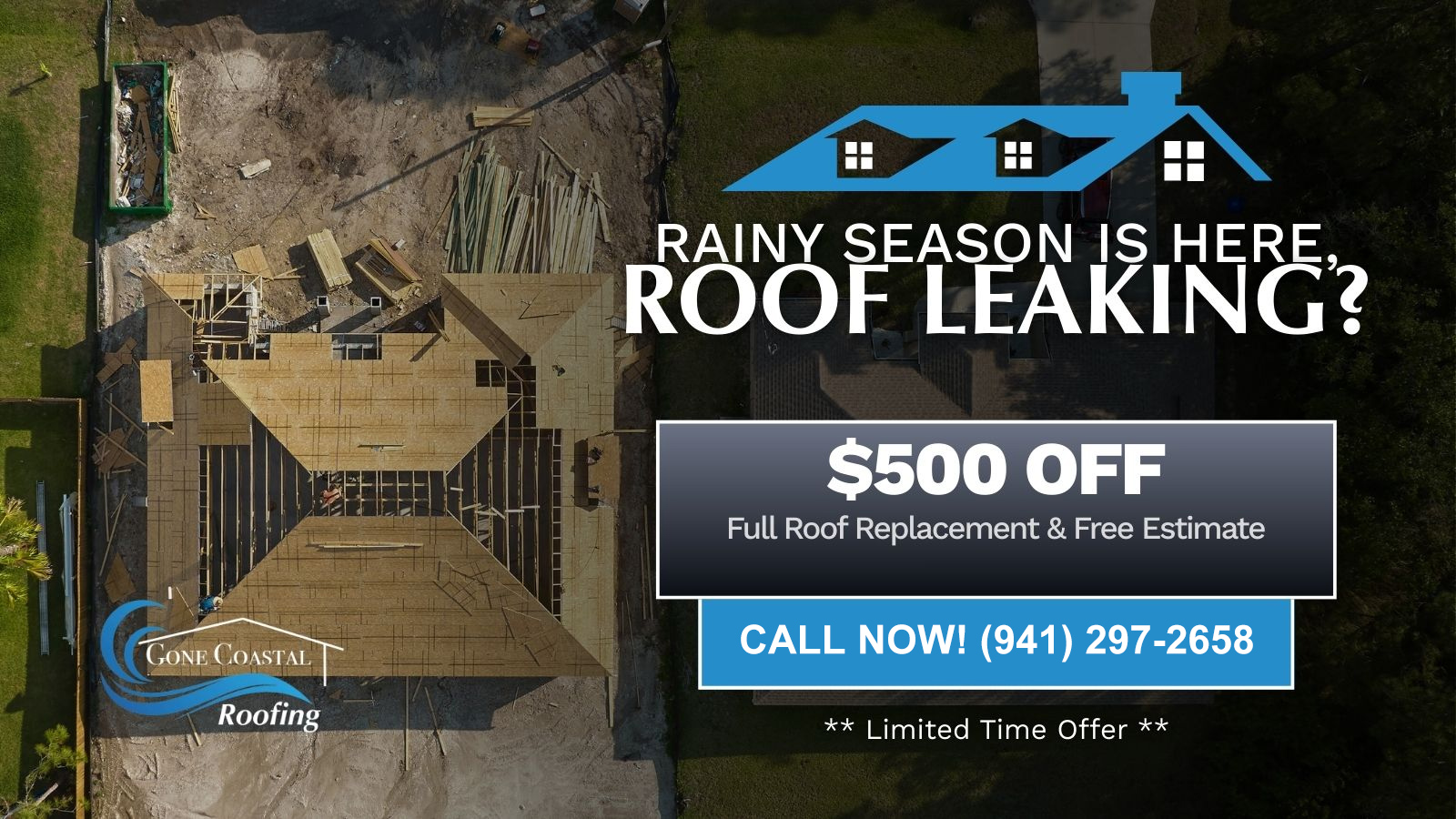When afternoon downpours turn into tropical systems, your roof is the first—and most important—line of defense. If you’re weighing shingle vs. metal for your next roof in Sarasota, this guide breaks down how each material performs in coastal weather so you can choose a truly storm‑resistant roof.
As a local, award‑winning contractor, Gone Coastal Roofing installs and services metal roofing in Sarasota as well as asphalt shingle systems. Here’s our honest comparison.
What Sarasota Storms Demand From a Roof
- High wind uplift resistance (proper fasteners, clips, and edge details)
- Rapid water shedding with sealed underlayments and tight flashing
- Impact resistance from wind‑borne debris
- Corrosion protection in salty coastal air
- Ventilation to control heat and moisture in the attic
Asphalt Shingle Roofs in Sarasota: Pros & Cons
Pros
- Budget‑friendly upfront cost and widely available.
- Easy spot repairs after isolated wind damage.
- Broad style and color options to match most neighborhoods.
- Advanced shingles (architectural/laminate) offer higher wind ratings than 3‑tab.
Cons
- More vulnerable to wind uplift at eaves and ridges if not installed to spec.
- Granule loss from UV and wind can shorten the lifespan.
- Shorter service life than metal in harsh sun and salt air.
- Requires regular maintenance (sealants, nail pops, flashing checks).
Best fit: Homeowners seeking a cost‑effective roof with solid performance when installed correctly, or planning to move within 10–15 years.
Metal Roofing Sarasota: Why It’s the Coastal Champion
Pros
- Excellent wind performance thanks to interlocking panels and secure fastener systems.
- Sheds water fast—fewer seams reduce leak risk in driving rain.
- Long lifespan (often multiple decades) with minimal maintenance.
- Resists rot, mildew, and pests; ideal for humid, salty environments.
- Energy efficient—reflective finishes can reduce cooling loads.
- Lightweight yet strong; works well on many existing structures.
Cons
- Higher initial investment than shingles.
- Detail‑sensitive installation—proper clips, underlayment, and edge metal are critical.
- Potential denting from large hail (cosmetic in many cases).
Best fit: Owners prioritizing maximum storm protection, lower lifetime cost of ownership, and modern curb appeal.
Side‑by‑Side Comparison
| Factor | Asphalt Shingles | Metal Roofing |
|---|---|---|
| Wind Uplift | Good with architectural shingles & correct nailing; edges are critical | Excellent with interlocking panels/clips and proper edge metal |
| Heavy Rain | Good; relies on underlayment & flashing integrity | Excellent; large panels shed water quickly |
| Salt/Coastal Exposure | Granule wear over time | Very good with coastal‑rated coatings/finishes |
| Impact Resistance | Varies by shingle; repairs are easy | Strong; may show cosmetic dents in severe hail |
| Lifespan | Typically 15–25 years | Often 40+ years with maintenance |
| Maintenance | Periodic repairs, resealing, inspection | Low; routine checks of fasteners & sealants |
| Upfront Cost | Lower | Higher |
| Energy Efficiency | Moderate | High (reflective finishes) |
| Aesthetics | Traditional look, many colors | Contemporary or farmhouse; multiple profiles/finishes |
Which Roof Is More “Storm‑Resistant” in Sarasota?
If your #1 goal is storm resilience, metal roofing has the edge due to panel interlock, superior wind uplift performance, and faster water shedding. That said, architectural asphalt shingles installed to Florida best practices—with upgraded underlayment, enhanced nailing patterns, and secure edge metal—can perform very well and are more affordable.
Your best choice depends on:
- Budget and how long you’ll own the home
- HOA/style requirements (tile look vs. standing seam metal vs. shingles)
- Energy‑efficiency priorities
- Tolerance for maintenance vs. higher upfront cost
How to Maximize Storm Performance (No Matter the Material)
- Hire a local pro who understands coastal details: edge metal, sealants, underlayment laps, and fastener patterns.
- Upgrade underlayment to a high‑quality synthetic or peel‑and‑stick in vulnerable areas.
- Fortify edges and penetrations (chimneys, skylights, vents).
- Keep gutters clear to prevent wind‑driven rain backup.
- Schedule annual inspections—especially before and after storm season.
- Tarp quickly after damage to prevent interior water intrusion.
FAQs
Are metal roofs noisy in storms?
Not with modern assemblies. Underlayment, decking, and attic insulation dramatically reduce sound.
Will a metal roof rust near the coast?
Quality coastal‑rated coatings and proper trims protect against corrosion. Choose a finish designed for Florida’s salt air.
Can a shingle roof be storm‑resistant?
Yes—use architectural shingles, enhanced nailing, upgraded underlayment, and strong edge metal. Installation quality is key.
Why Homeowners Choose Gone Coastal Roofing
- Local Sarasota experts for metal roofing and asphalt shingles
- BBB A+ and award‑winning service
- Certified with leading manufacturers
- Storm damage and emergency tarping
- Financing options and strong warranties
Get a Storm‑Strong Roof—Built for Sarasota
Whether you’re leaning toward shingles or metal, our team will design a storm‑resistant roof tailored to your home, budget, and neighborhood.
Call Gone Coastal Roofing at 941‑209‑0713 or request your free estimate.
Serving Sarasota neighborhoods including Siesta Key, Gulf Gate, Palmer Ranch, Bee Ridge, and beyond.



